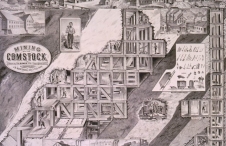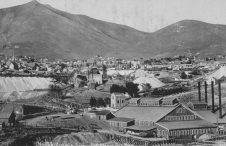Andrew S. Hallidie
Andrew S. Hallidie was the inventor of the flat wire cable, a device that made it possible to send elevators into deep, hard rock mines. Born Andrew Smith in London in 1836, he was the son of an engineer who held patents for making metal wire ropes. Smith eventually adopted the name Hallidie after his godfather, Sir Andrew Hallidie.
In 1852, Andrew Smith Hallidie immigrated to California where he worked at placer mining and blacksmithing. Three years later at age nineteen, he constructed a wire suspension bridge and flume on the Middle Fork of the American River, beginning a career in construction that often incorporated wire rope. In 1857, he established the San Francisco firm of A. S. Hallidie and Company, which manufactured wire cable.
Hallidie solved one of the Comstock Mining District's technological challenges. When hoisting over several hundred feet, hemp rope broke from its own weight, even without hauling ore or people. Round steel wire cable proved problematic because it would kink and snap when rolled onto a hoisting spool. Hallidie developed a flat wire cable, which he premiered in a Gold Hill mine in 1864. It easily rolled onto a spool, quickly becoming the industry standard for hoisting.
Hallidie adapted his invention for use in his San Francisco cable car system, which first ran in 1873. The renowned engineer died in San Francisco in 1900.
Article Locations
Related Articles
Further Reading
None at this time.



